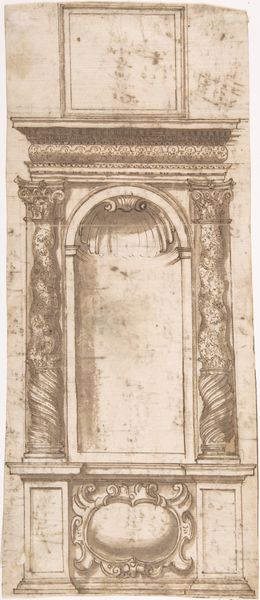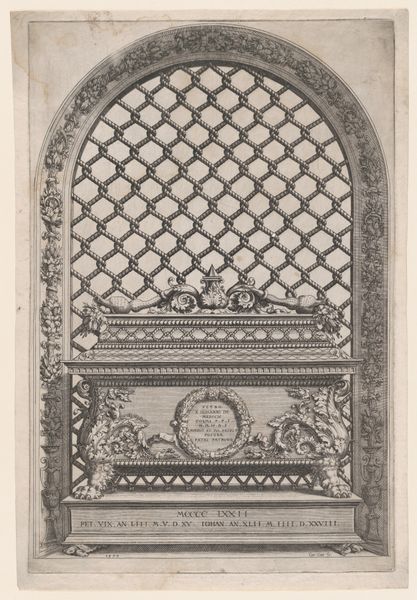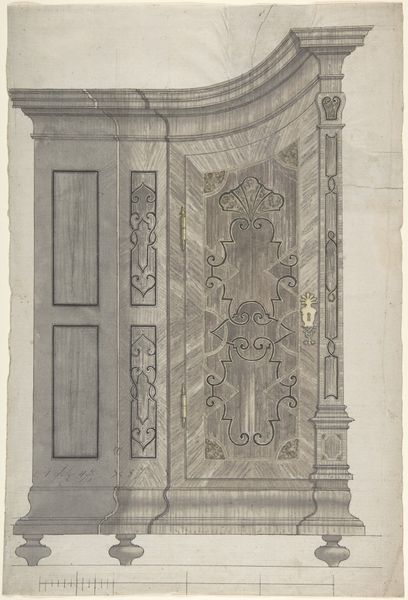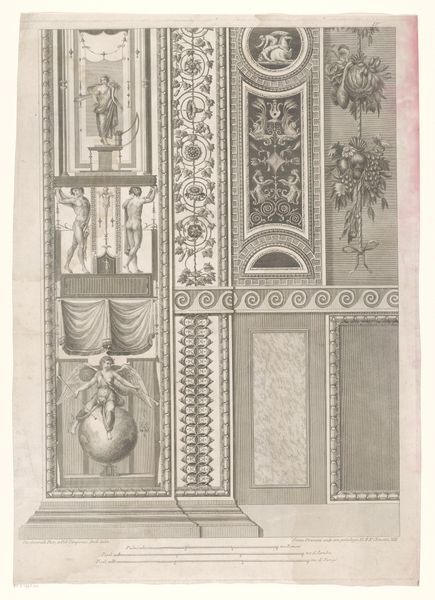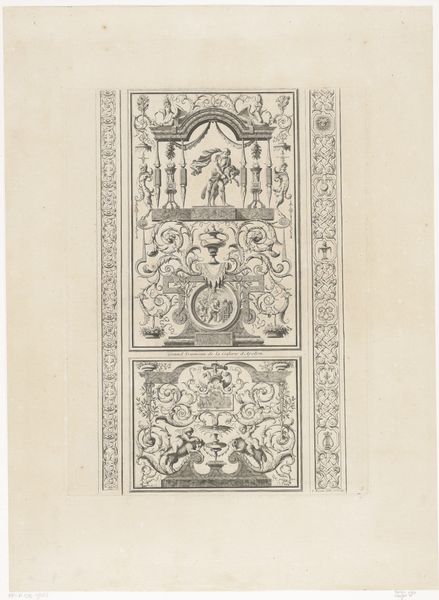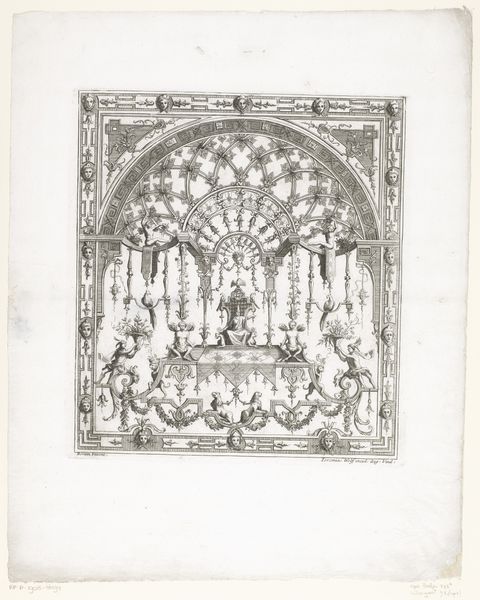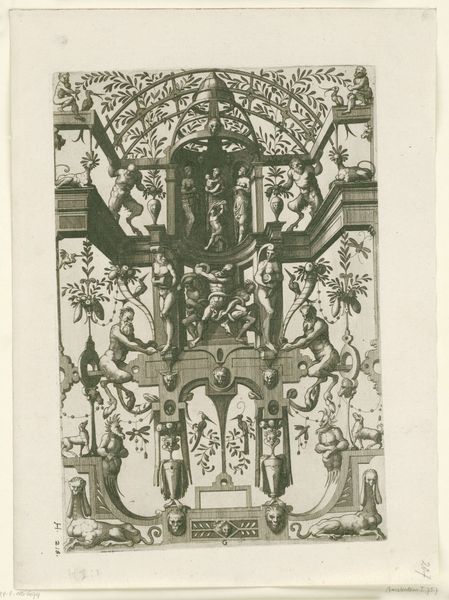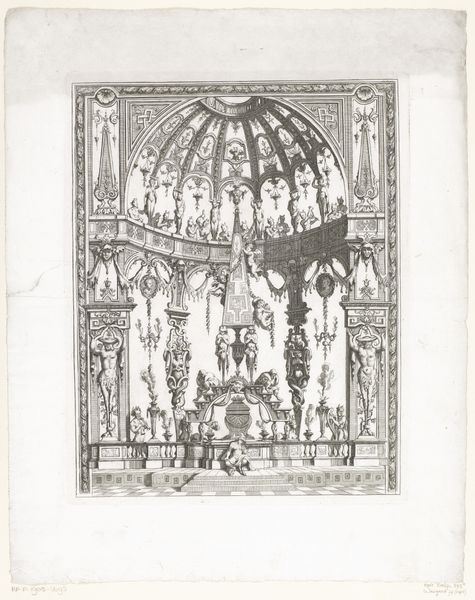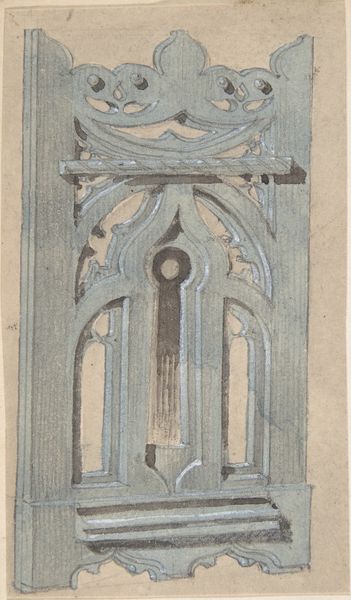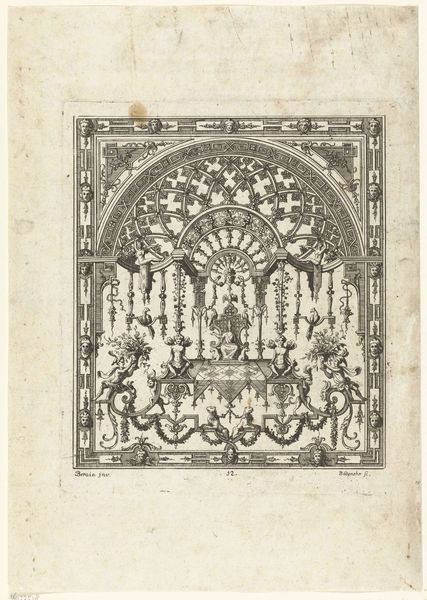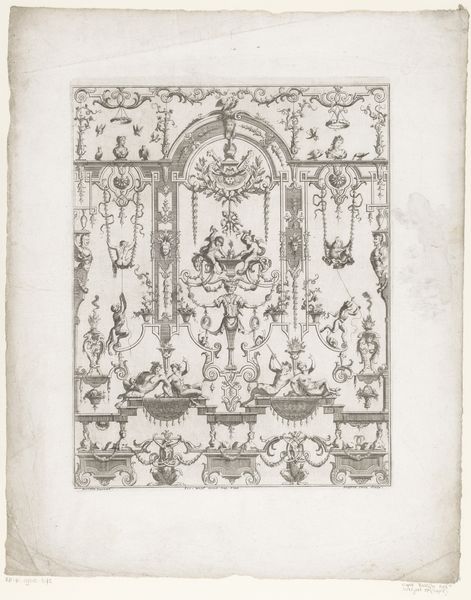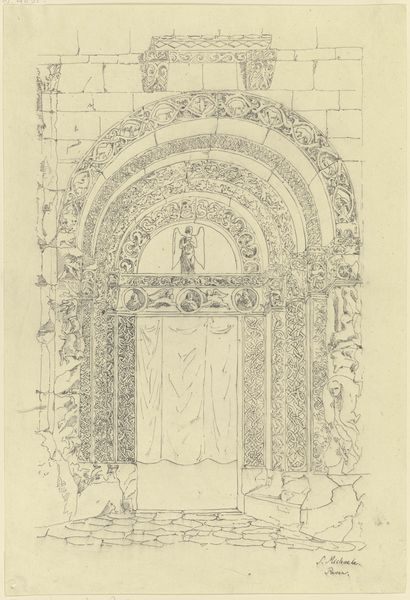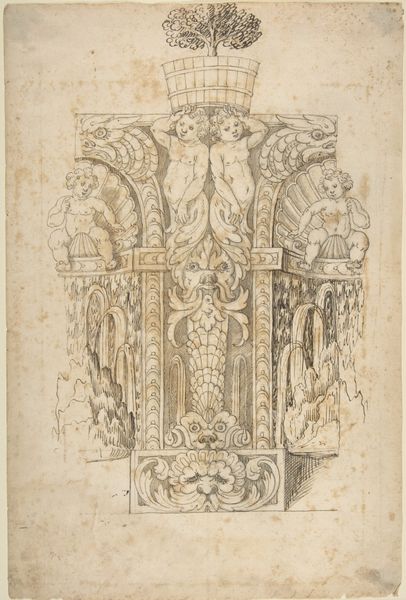
Ontwerp voor de omlijsting van een kalender voor 1901 met vrouwen en bloemen 1900
0:00
0:00
gerritwillemdijsselhof
Rijksmuseum
drawing, print
#
drawing
#
art-nouveau
# print
#
landscape
#
figuration
#
symbolism
#
decorative-art
#
nude
Dimensions: height 510 mm, width 395 mm
Copyright: Rijks Museum: Open Domain
Gerrit Willem Dijsselhof created this calendar design around 1901, using woodcut techniques. Dijsselhof’s choice of wood, with its inherent grain and texture, directly influences the artwork's aesthetic. Woodcut is an inherently laborious process. The artist would have meticulously carved away sections of a woodblock, leaving behind the design’s raised areas to receive ink. The texture and direction of the grain, visible in the final print, speak to the hand-made nature of the piece. The final print shows flat black areas, and an integration of botanical and figurative imagery, reflecting the wider Arts and Crafts movement. Dijsselhof was actively engaged with this movement, in which artists and designers sought to counter the alienating effects of industrial production through a renewed emphasis on handcraft and design. This calendar encapsulates the movement's values, with its combination of natural motifs and clear, graphic design, and its implied critique of mass-produced ephemera. Understanding Dijsselhof’s materials and making processes helps us to appreciate the artwork within its social and cultural context.
Comments
No comments
Be the first to comment and join the conversation on the ultimate creative platform.
